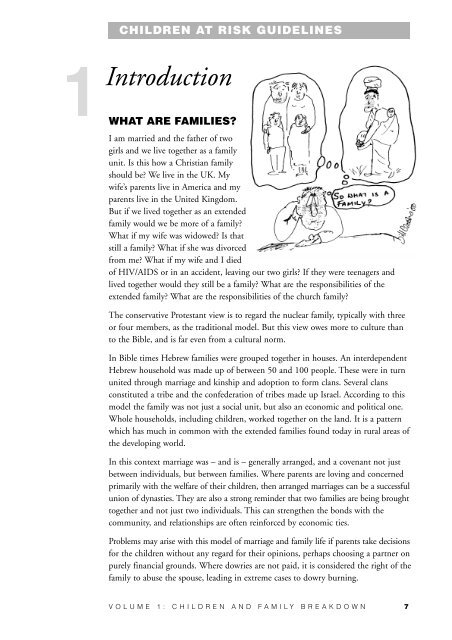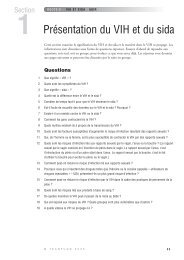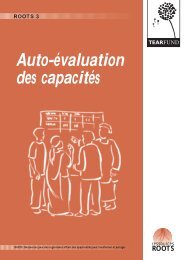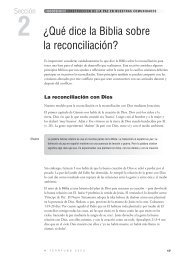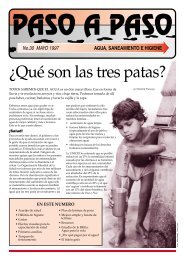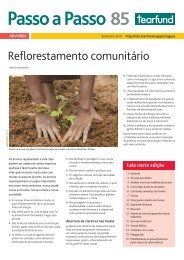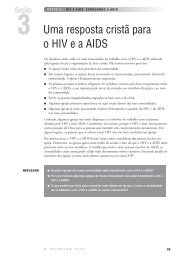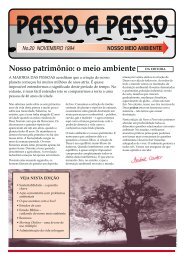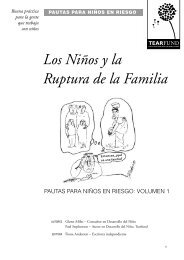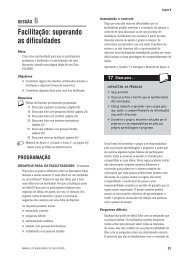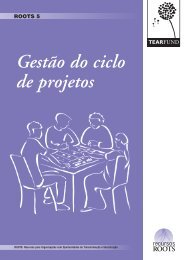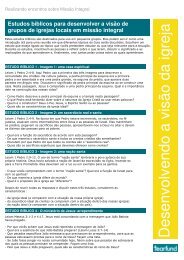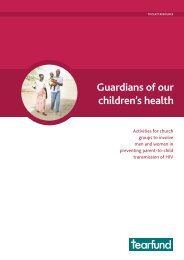Children and Family Breakdown - The Tearfund International ...
Children and Family Breakdown - The Tearfund International ...
Children and Family Breakdown - The Tearfund International ...
Create successful ePaper yourself
Turn your PDF publications into a flip-book with our unique Google optimized e-Paper software.
1<br />
CHILDREN AT RISK GUIDELINES<br />
Introduction<br />
WHAT ARE FAMILIES?<br />
I am married <strong>and</strong> the father of two<br />
girls <strong>and</strong> we live together as a family<br />
unit. Is this how a Christian family<br />
should be? We live in the UK. My<br />
wife’s parents live in America <strong>and</strong> my<br />
parents live in the United Kingdom.<br />
But if we lived together as an extended<br />
family would we be more of a family?<br />
What if my wife was widowed? Is that<br />
still a family? What if she was divorced<br />
from me? What if my wife <strong>and</strong> I died<br />
of HIV/AIDS or in an accident, leaving our two girls? If they were teenagers <strong>and</strong><br />
lived together would they still be a family? What are the responsibilities of the<br />
extended family? What are the responsibilities of the church family?<br />
<strong>The</strong> conservative Protestant view is to regard the nuclear family, typically with three<br />
or four members, as the traditional model. But this view owes more to culture than<br />
to the Bible, <strong>and</strong> is far even from a cultural norm.<br />
In Bible times Hebrew families were grouped together in houses. An interdependent<br />
Hebrew household was made up of between 50 <strong>and</strong> 100 people. <strong>The</strong>se were in turn<br />
united through marriage <strong>and</strong> kinship <strong>and</strong> adoption to form clans. Several clans<br />
constituted a tribe <strong>and</strong> the confederation of tribes made up Israel. According to this<br />
model the family was not just a social unit, but also an economic <strong>and</strong> political one.<br />
Whole households, including children, worked together on the l<strong>and</strong>. It is a pattern<br />
which has much in common with the extended families found today in rural areas of<br />
the developing world.<br />
In this context marriage was – <strong>and</strong> is – generally arranged, <strong>and</strong> a covenant not just<br />
between individuals, but between families. Where parents are loving <strong>and</strong> concerned<br />
primarily with the welfare of their children, then arranged marriages can be a successful<br />
union of dynasties. <strong>The</strong>y are also a strong reminder that two families are being brought<br />
together <strong>and</strong> not just two individuals. This can strengthen the bonds with the<br />
community, <strong>and</strong> relationships are often reinforced by economic ties.<br />
Problems may arise with this model of marriage <strong>and</strong> family life if parents take decisions<br />
for the children without any regard for their opinions, perhaps choosing a partner on<br />
purely financial grounds. Where dowries are not paid, it is considered the right of the<br />
family to abuse the spouse, leading in extreme cases to dowry burning.<br />
VOLUME 1: CHILDREN AND FAMILY BREAKDOWN<br />
7


